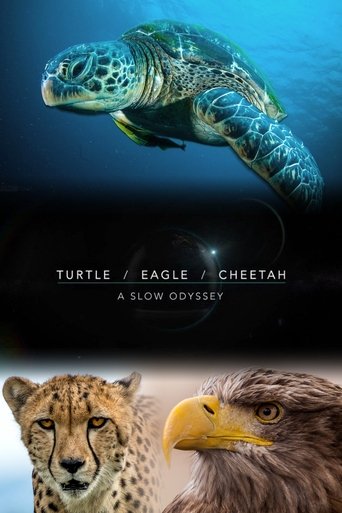
Smartest
The socially complex chimpanzee, the learned elephant, the remarkable birds, the inventive bolas spider, the architectural termite, the inquisitive dolphin or the inimitable octopus – which is the most intelligent? Chimpanzee: Born with brains of immense capacity these dexterous apes are fast learners – using twigs and stones as tools, chimps can prize treats out of hidden crevices. Elephant: Family oriented, social and extremely loyal, the ties that bind this family group are made and strengthened by a complex array of vocal and tactile communication, by behavior patterns and knowledge passed down through generations and a memory that out classes our own. Birds: The bird world is full of hidden surprises. From the elegant design of their feathers, to their astounding hand-eye co-ordination to some of the most incredible courtship displays imaginable, many of the worlds birds are staggeringly impressive. Bolas spiders: are small nocturnal spiders, the females, at no more than 15mm are over ten times larger than the miniscule males. Termite colonies: are populated and dominated by one hugely overgrown queen. She will lay all the eggs for the colony – sometimes over 2000 a day. Dolphins: have two main forms of highly sophisticated communication – the clicks of ecolocation and the whistles used for contact calls and identification.
Country: AU | US
Language: En | It
Runtime: 26
Season 1:

Lion: Giraffes are eternally majestic, buffalo formidable, but with their golden fur, regal mane and fearsome presence lions are known as the ‘King of Beasts’. Lions have been celebrated throughout history for their majesty, courage and strength. Kings and Queens have taken the Lion as a symbol of dominance and leadership. The largest of all the carnivores on the African plains, lions are smaller and faster than the tigers of Asia. Scorpions: A barely habitable burnt corner of the earth, parched and sun drenched... Once the sun has set and temperatures drop, the night time wilderness becomes a very dangerous place. Danger lurks in the form of a sharpened spike loaded with toxic venom. It could be waiting anywhere – under a rock, in your shoe, or even in your bed. These are Scorpions!! Spiders: The creatures of many a phobia, tarantulas, with their thick stocky bodies, massive legs and huge fangs can truly be the stuff of nightmares. But in the spider world you don’t have to be big to be dangerous. The Sydney funnel web is one of the deadliest of all to humans – males often come into houses in search of females – these blue-black spiders are aggressive and not afraid to bite. Hiding out in the barbeque may be another of the spider worlds most feared members – the redback. The female redback can cause death to young and old, but no one is more at risk than the tiny male redback – who she eats after mating. Snakes: Snakes have fascinated and terrified humans for thousands of years. In many parts of the world they are worshipped as protectors and creators. But some cultures fear snakes as devils and symbols of vengeance and death. Whether as an evil power or symbol of fertility, the snake is a powerful image. Crocodile: Lurking in the worlds rivers, marshes and swamps lie one of the most prehistoric and dangerous predators on the planet. Stories, songs and legends have build up around them. People tremble in fear at their name. These are the Crocodiles!!

Ceetah: On the mighty expanse of the African savannahs a battle has been raging and evolving for millions of years. The race between predator/prey can reach astonishing speeds.But there is one animal that can out-pace them all. The elegant and graceful cheetah; the fastest animal on earth. With its lithe body, long slender legs, compact head, acute eyesight and superb hearing the cheetah prowls across its home on the savannah. Pronghorn: The fastest animal in the western hemisphere – the Pronghorn, flies across the prairies of North America. With its elegant loping run covering 6 meters with each stride the pronghorn can sustain speeds of 60 km/hr and can reach a top speed of almost a hundred. Wildebeest: Wildebeest, the iconic roaming antelopes of the African plains, these bearded, shaggy maned and horned animals are among natures best endurance runners. Calves learn to walk within minutes of birth and can keep up with the herd within days. Wildebeest stands a meter and a half tall at the shoulder and can be two and a half meters in length. Weighing in at 270kg they are heavier than a lion and able to run just as fast. Kangaroo: The diverse landscapes of Australia are home an alert, curious and enigmatic animal, the world's largest and fastest marsupial – the mighty kangaroo. Bounding across vast open bush land with hops of up to 9 meters, their spring loaded hind legs power them forward. As each hind limb hits the ground massive calf tendons are stretched by 50%. As they shorten with the next jump the energy they store is released. The faster they travel, the more elastic energy is created – self propelling these masters of the outback. The fastest marsupial on earth, at full bound a large kangaroo can excel to over 60km/hr. Brumby: Wild horses are truly a symbol of majestic power: strong , sleek elegant - the ultimate untamable free spirit, galloping unbridled across the land. Almost a million Brumbies grace Australia's landscapes. The powerful galloping horse, the mighty hopping kangaroo, the endurance running wildebeest, the bounding pronghorn or the sprinting cheetah, which one is the most impressive across land?

The colossal elephant: The lush tropical forests of Asia hold within them some of nature's mightiest creatures. Each of these silent footsteps carries with it the immense weight of the world's largest land mammal.The sweeping plains of Africa are home to the only land animal bigger than the Asian elephant. Are these modern day mammoths really the biggest animals on earth? The intimidating bear: The sweeping meadows of sub alpine Alaska and the woodlands and forests of North American are home to some of the biggest of bears. Grizzly bears are enormous animals. Most weigh between 2 and 3 hundred kilos but the largest males can reach a colossal half ton. The largest of all bears, the Arctic polar bear is a colossus of power and the world's largest land carnivore. The largest land carnivore, could these white giants be the biggest animals on earth? The barrel-like hippo: Lumbering across land, the enormity of the barrel like hippo is without question. Other grass eaters are frail by comparison. Are these submerged barrels of power the biggest aquatic animals in the world? The towering giraffe: Standing taller than any other living animal in their towering majesty is the proud and elegant giraffe.With a grace of movement that defies its great height, adult giraffes stand 6 meters tall, their necks are two meters in length and their legs are higher than an average man. A fully grown male weighs over 16 hundred kilos. Each of the cervical vertebrae in their neck is over 25cm long! Could the towering height of this most elegant of beasts make it the biggest animal on earth. The gigantic whale: The Mighty whale graces our oceans with a size and strength unrivalled on land. Three times longer than the tallest giraffe and weighing more than a dozen hippos’ the beautiful humpback whale is most famed for its mystical and haunting song. The largest animal known to have lived at any time in the history of our planet, this gigantic creature can be over 30 meters long and lives entirely on tiny plankton.

The socially complex chimpanzee, the learned elephant, the remarkable birds, the inventive bolas spider, the architectural termite, the inquisitive dolphin or the inimitable octopus – which is the most intelligent? Chimpanzee: Born with brains of immense capacity these dexterous apes are fast learners – using twigs and stones as tools, chimps can prize treats out of hidden crevices. Elephant: Family oriented, social and extremely loyal, the ties that bind this family group are made and strengthened by a complex array of vocal and tactile communication, by behavior patterns and knowledge passed down through generations and a memory that out classes our own. Birds: The bird world is full of hidden surprises. From the elegant design of their feathers, to their astounding hand-eye co-ordination to some of the most incredible courtship displays imaginable, many of the worlds birds are staggeringly impressive. Bolas spiders: are small nocturnal spiders, the females, at no more than 15mm are over ten times larger than the miniscule males. Termite colonies: are populated and dominated by one hugely overgrown queen. She will lay all the eggs for the colony – sometimes over 2000 a day. Dolphins: have two main forms of highly sophisticated communication – the clicks of ecolocation and the whistles used for contact calls and identification.

The mighty grizzly bear, the tiny powerful ant, the lunging inimitable crocodile, the indestructible rhino beetle, the hammering mantis shrimp. Which is the strongest of them all? Grizzly bear: In the rugged beauty of North Americas sub-alpine lands patrols its mightiest resident. Brown bears are aggressive, formidable animals that can weight up to half a ton, have a bite force of over a thousand pounds per square inch and at full speed can run at 50 km per hour. With claws over ten cms’s long and a huge mound on their back that anchors massive shoulder muscles their digging and striking capacity is phenomenal… Ants: With over 12 thousand species the ants of the world come in great variety, but they are all tough, strong territorial defenders of their realms, and will dispatch unwanted guests with relish. Crocodile: For as long as rivers have flowed, dark reptiles have governed their waters. The unmistakable jaw of a crocodile possesses the most powerful bite force of any animal ever recorded – rivaling even the mighty Tyrannosaurus Rex. Rhino beetle: With their mighty trees and flowing rivers, forests are symbols of great towering strength – yet scurrying over the plants, branches and leaf litter below is a creature so strong it can lift 850 times its own weight. Mantis shrimp: Not only does the colorful mantis shrimp have the most complex and bizarre looking eyes in the animal kingdom, it can deliver a blow with the equivalent force of a .22 calibre bullet…

Clown fish: The warm tropical waters of the world's oceans are home to a dazzling array of beautiful marine life. In the shallow waters live stationary animals that look more like plants with their long waving tentacles – they are home to some of the most famous, and most brightly colored of all the fish in the sea. Clown anemone fish live their lives in the safe confines of a single anemone, dancing through its tentacles, their bright colors flashing in and out. Kangaroo: Across Australia thousands upon thousands of kangaroos bound over the countryside. Their super powered legs are born to hop. Leaping through the outback these furry marsupials can speed along at over 60 km/hr and they start practicing as soon as they are out of the pouch. The iconic kangaroo is so well loved throughout Australia it has become a symbol of the country and is seen on coins, on the coat of arms, on car stickers and on countless road signs… Monarch butterfly: The stunning Monarch butterflies that fill the skies are some of the most beautiful and delicate of all of the world's insects. These small winged wonders migrate over 4000 kilometers to and from their hibernation sites. Incredibly, no single butterfly goes each way, but somehow the same routes are travelled year after year. Millions of Monarch Butterflies take to the skies every Autumn and fly from the cooler parts of North America to the warmer climates of Mexico and California where they can survive the winter. They are the only butterflies known to make such a massive journey… Budgerigar: Wild budgerigars or "Budgies" are social nomadic little parrots that come together in their hundreds to fly in lively undulating flocks. In these densely packed fast wheeling flocks can be tens of thousands of these pretty petite little parrots as they swarm and swoop over the beckoning waterholes. Surely these are some of the prettiest of all birds… Koala: The adorable soft-furred cuddly koala is one of the world's most well loved little creatures and one of Australia’s favorite residents. Among the eucalypt forests and woodlands of eastern Australia these enigmatic little animals spend most of lives in trees. These adorable furry sleepy animals are surely enough to melt anyone’s heart. Gentle kangaroo’s, super-furry koala’s, delicate butterflies, bright orange clown fish or cheerful budgies which is the cutest of them all?

The proud and majestic dingo, the iconic kangaroos, cats that roam wild, the delightfully bizarre platypus and the unmistakable koala - all call Australia home. Koala: One of Australia’s most recognizable creatures spends most of its life hidden from view in the comfort of the gum trees it calls home. Found in eastern and southern Australia koalas are known for their slow and sleepy leaf eating lifestyle, yet there is much more to the famed koala than meets the eye. Dingo: Dingoes have been in Australia for thousands of years. Descended from wolves these agile canines are sleek and efficient hunters. Lithe, elegant, ferocious and highly alert these magnificent pack hunting animals are Australia’s largest land carnivores. Kangaroos: Of all Australia’s one hundred and forty marsupials, the kangaroos are the most iconic, their bounding strides summing up the very essence of the land. All male kangaroos box in their quest for dominance – blows, grapples and kicks sounding out through the outback. Wild cats: Australia is home to over 12 million wild house cats. These lithe, nimble felines are the only cats in Australia and have made homes for themselves in every part of the country – from rainforest to desert, to woodlands and grasslands. Incredibly adept and proficient hunters their feline prowess plays havoc on the native wildlife. Platypus: Of all the animals that have evolved in Australia, there is one that is more intriguing, more enchanting and more unique than any other. An egg laying mammal with billowing webbed feet and an electro-sensitive bill, the water loving platypus is an animal like no other. With its powerful dingos, iconic kangaroos and koalas, invasive wild cats and bizarre platypuses, Australias wildlife is truly mesmerizing.

Falcons: Aerial hunters of other birds the dark eyed falcons are among the fastest of the raptors, with the infamous peregrine falcon taking the title of fastest animal on earth. Swooping on hapless birds in mid-flight, these masters of aerial hunting are astounding. Pigeons and budgies are carried off through the skies and devoured. Wedge talled eagle: Australia largest bird of prey the regal and awe inspiring wedge tailed eagle soars high through clear skies for over 90 minutes at a time. Able to lift half their own body weight these powerful eagles can carry off joeys and swoop down on rabbits, their victims carried off dangling from immense talons. Pelican: With their comical faces and cartoon like bills, pelicans are among the most loved and well known of the water birds. Although one of the heaviest of the flying birds, air pockets in their skeleton and under their skin make their huge bodies relatively light as they soar on thermals 3000m high. Vulture: Behind the bold headed craggy-necked beauty-less appearance of the vulture lies a truly magnificent creature. The stomach acid of these mighty birds is so corrosive they can digest putrid carcasses. These seemingly unlovable birds mate for life and have extremely high standards of fidelity. Kestrel: One of the smallest of the falcons the exquisite kestrel hawks flying insects and is one of the few raptors that can hover – suspending itself mid air this little hunter hovers 10 – 20 m above the ground waiting for the moment to swoop down on the grasshoppers below.

Chameleon: The worlds most famous master of disguise, the resplendent chameleon is more than just an ever changing face. Able to change not only their colour but also their patterns the pink, blue, red, green, orange, black, yellow, turquoise and purple chameleons that we visit use these colour changes to communicate, letting others know their mood, their intention and their sexual state. Sea dragon: Leafy sea dragons flutter through the ocean, their tiny yellow-green bodies adorned with delicate leaf-shaped appendages. They are a true delight to behold as your eyes distinguish them from the seaweed and kelp formations where they make their home. Death adder: Blending perfectly between rocks and leaf litter the brown-grey bands of the sturdy death adder render it almost invisible to the passer by. The bright lure of its tail twitches by its head, tempting in small mammals to the hidden snake. When the meal passes by, the hidden snake strikes. Stonefish: The prince of camouflage in the underwater world, Stonefish have warty slimy skin covered in mud and algae. Even when looking right at them its hard to see – until the strange looking rock moves! But this is not a rock to be stepped on – stonefish have 13 highly venomous spines along their back.

Ants: There are over a million ants to every person on the planet and these tiny creatures present the worlds greatest army. Slave maker ants take the larva of other ants and rear the off-spring to a life of servitude, meat eater ants make super-nests that stretch over half a kilometer while fire ants administer blister raising stings. Spiders: Stocky, hairy trap door spiders lay in wait – burrow openings fitted with a hinged lid. When an unsuspecting insect wanders by it can launch itself and pounce in 0.03 seconds. Tiny hairless crab spiders have two rows of four eyes and can rotate each of these eight eyes independently – keenly homing in on prey before it ambushes it, while the golden orb spiders weave magnificent gleaming webs to ensnare their prey. Leaches: From tiny almost imperceptible dots to the bright stripes of the tiger leach and the 30cm bloated body of the giant leach, in the streams, rivers and oceans of the world these amazing segmented worms are sucking the blood from anything that passes by.

Cobra: The magnificent 5 meter King Cobra is the longest of all the venomous snakes. Displayed on the streets of Asia and revered through its range, the King Cobra carries enough venom in a single bite to kill an elephant. Spiders: The venom of the Sydney Funnel web spider is a complex chemical cocktail – designed to take out a variety of victims its venom is fast acting and highly effective – and without anti-venom it can easily kill a human. Unlike the small fanged, more reclusive venomous redback, the funnel web is an aggressive attacker. Scorpion: The sting in the tail of the scorpion is one deserving of respect. Many types of venom are found among these hardy, armored and clawed arachnids. Venom is tailored to the users lifestyle and chosen prey. Around 40 species of scorpion have venom powerful enough to kill a human. Fierce snake: The arid interior of Australia is home to the world most venomous snake – the yellow-brown fierce snake. This coiled beauty is actually far from fierce but should the shy serpent bite, the most toxic of all snake venoms is discharged accompanied by a spreading agent that increases the rate the neurotoxic venom is absorbed. Rattlesnake: The hemotoxic venom of a rattlesnake destroys the tissues of its prey of small birds and mammals. Although they only strike humans when threatened or provoked the tiger rattlesnake has the most toxic venom of all the rattlesnakes and is one of the most toxic snakes in north America.

Toxins are a regular part of the animal world, an essential tool for hunting and defense. Some of the ocean dwellers have truly mastered the use of venom. Box jellyfish: With up to 15 three meter long tentacles extending from each corner of its body, and each of these tentacles covered in stinging cells the box jellyfish has around five thousand million stinging cells laced with one of the most toxic compounds known. Flushed from rivers to oceans with the wet season, the transparent box jellyfish brings with it a deadly presence to its prey, not to mention any unlucky human lashed by even half a tentacle. Stonefish: More venomous than even the land snakes, the venomous snakes of the oceans glide through the water with undulating grace, surfacing for air as they travel. Usually preying on fish, the venom of the sea snake has to be fast and powerful to stop its victims from swimming away. Cone shell: The most unthreatening things can sometimes be the most dangerous. The beautifully patterned shell of this sea snail may look tempting to touch but the harpoon that erupts out of its proboscis and into the victim is delivering a complex blend of hundreds of different toxins for which there is no anti-venom. Blue ringed octopus: The small light brown octopus that rests on the bottom of the ocean has a surprise in store. When it feels threatened little electric blue circles appear on its body – a warning to back off – this is a blue ringed octopus! These stunning iridescent animals carry enough venom to kill 26 adults within minutes - their biting beak can break through a wetsuit with ease.

The blue whale dwarfs anything that’s ever lived while the giraffe towers above any other living creature, the box jellyfish has thousands of tiny highly toxic stinging cells and is a real hazard to swimmers, the venom of the inland taipan is more powerful than any other known land snake yet it lives far from most human populations; termites work together to make air-conditioned homes while dolphins communicate to plan a group fishing strategy, lions work together to bring down a giraffe, polar bears can smash through ice while the crocodile has the most powerful bite force known with nature giving us such an incredible list of contenders in so many very different ways, can we really pick who is the king of all?





















